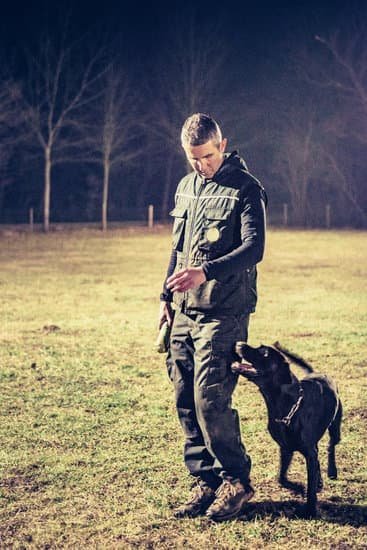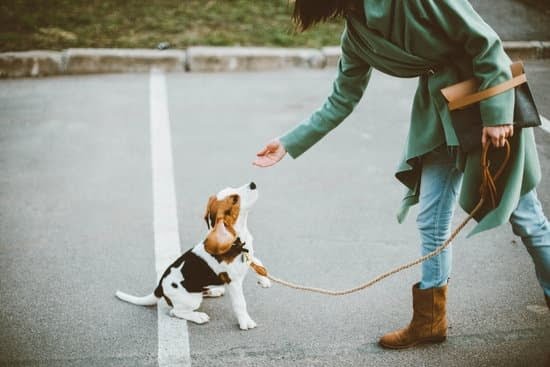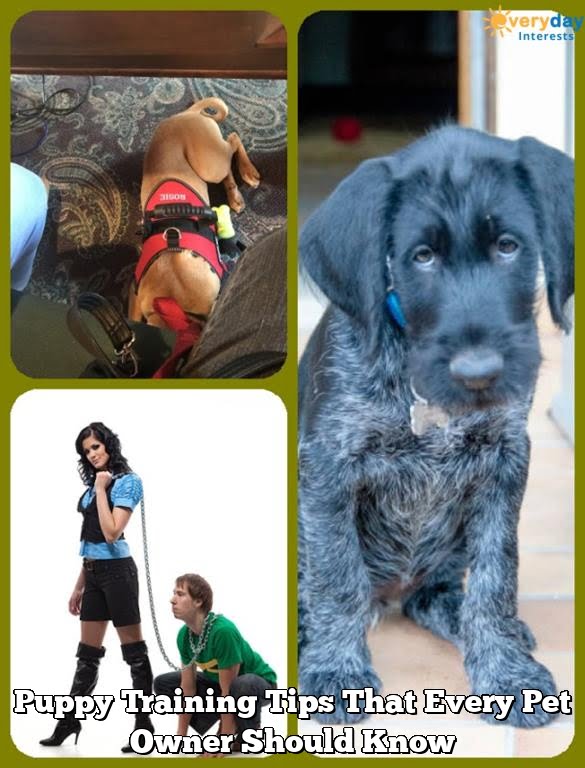Many people wonder, “can every dog be trained to be a service dog?” The role of service dogs is vital for individuals with disabilities, providing them with independence, support, and companionship.
In this article, we will explore the characteristics and qualities that define a service dog, the training process from puppies to fully trained service dogs, as well as the selection criteria for choosing the right dog for service training. While many dogs can be trained to serve in various roles, not every dog is suited for service work.
Understanding the important role of service dogs in society is crucial. Service dogs are trained to assist individuals with a variety of disabilities, including physical impairments, hearing or visual impairments, and psychiatric conditions. They are not simply pets but are considered aid equipment that can greatly enhance the lives of their handlers. However, it’s essential to recognize that not every dog has the temperament or characteristics to become a service dog.
In this comprehensive exploration of training service dogs, we will also delve into the challenges and limitations of training every dog for service work. Additionally, we’ll discuss the importance of professional training and certification for service dogs and touch upon alternative roles that certain dogs may excel in. Join us as we uncover the possibilities and realities of training dogs for diverse roles through thorough analysis and examination.
What Defines a Service Dog
Service dogs are highly trained animals that provide assistance and support to individuals with disabilities. These dogs possess specific characteristics and qualities that make them ideal for their role as service animals. One of the key defining factors of a service dog is their temperament. Service dogs need to be calm, obedient, and capable of handling various situations in a composed manner. They must also be friendly, sociable, and able to interact with people and other animals in public settings.
Another important quality of a service dog is their intelligence and trainability. They should be able to quickly learn and execute commands that are essential for assisting their handlers. Additionally, service dogs must have a strong work ethic and be motivated to perform tasks that aid individuals with disabilities in their daily lives.
Furthermore, service dogs must have excellent physical health. They need to be agile, strong, and capable of performing tasks such as guiding individuals who are blind or visually impaired, alerting individuals who are deaf or hard of hearing to sounds, or providing mobility assistance to those with physical impairments. The overall health and stamina of a service dog play a crucial role in fulfilling their duties effectively.
Overall, the characteristics and qualities that define a service dog include temperament, intelligence, trainability, sociability, work ethic, motivation, and physical health. These traits are essential for enabling service dogs to carry out their responsibilities successfully while providing invaluable support to people with disabilities.
The Training Process
Early Socialization and Obedience Training
The training process typically starts when the dog is still a young puppy. The first step involves early socialization, where the puppy is exposed to a wide range of environments, people, and other animals. This helps them develop confidence, adaptability, and good behavior in various situations. Obedience training also begins at this stage, teaching the puppy basic commands such as sit, stay, come, and heel.
Specialized Task Training
As the dog grows older, they move on to more specialized task training that is specific to the needs of their future handler. Depending on the type of service work they will perform (such as guide dogs for the blind or hearing alert dogs), they receive targeted instruction on tasks like navigating obstacles, retrieving items, or providing emotional support. This phase requires patience and consistency from both the trainer and the dog as they work together to master these skills.
Public Access Training
Another critical aspect of service dog training is public access training. Service dogs must be well-behaved and attentive in all environments, including busy public spaces such as shopping malls or restaurants. They need to ignore distractions while remaining focused on their handler’s needs. This part of their training ensures that they can accompany their handlers with confidence and composure in any situation.
Selection Criteria
When it comes to selecting a dog for service training, there are certain characteristics and qualities that are essential. One of the most important aspects is the dog’s temperament. A service dog needs to be calm, friendly, and patient, as they will often be in crowded or stressful environments while assisting their handlers. Additionally, they must be able to focus and remain obedient even in distracting situations.
Another important consideration is the dog’s physical health. Service dogs need to be in good physical condition in order to perform their duties effectively. Certain breeds may be more prone to health issues, so it is important to select a breed that is known for its overall good health.
Furthermore, the size and energy level of the dog should also be taken into account. Depending on the specific tasks they will be trained to perform, some service dogs need to be a certain size or have a particular level of energy. For example, a mobility assistance dog may need to be large and strong enough to provide support, while a medical alert dog may need to be more alert and energetic.
| Characteristic | Importance |
|---|---|
| Temperament | Calming presence in stressful situations |
| Physical Health | Good overall condition for effective performance |
| Size and Energy Level | Suitability for specific tasks |
Challenges and Limitations
Service dogs play a crucial role in assisting individuals with disabilities, but not every dog is suited to become a service dog. There are certain challenges and limitations that may make it difficult for some dogs to fulfill the demanding roles of a service animal.
Some of the key factors that determine whether a dog is suited for service work include:
- Temperament: Service dogs need to be calm, patient, and well-behaved, even in stressful or unfamiliar situations.
- Health: Dogs used for service work need to be in optimal health to handle the physical demands of their roles.
- Trainability: Not all dogs are equally trainable, and some may struggle with learning and executing complex tasks.
Additionally, specific breeds may have inherent traits that make them more suitable for service work than others. For example, Labrador Retrievers and Golden Retrievers are commonly chosen for their friendly nature, intelligence, and ability to be trained effectively.
While many dogs have the potential to become wonderful pets and companions, it’s important to recognize that not every dog has the temperament or abilities required to serve as a reliable and effective service animal. As such, careful consideration must be taken when selecting candidates for service dog training programs.
The Importance of Professional Training and Certification for Service Dogs
The training and certification of service dogs are crucial steps in ensuring that they are able to effectively perform their duties. Professional training helps to develop the necessary skills and behavior in a dog to become a reliable service animal.
This type of training involves teaching the dog specific tasks, such as retrieving items, opening doors, or providing stability for individuals with mobility issues. It also focuses on socializing the dog to ensure it is comfortable and well-behaved in public settings.
Professional certification for service dogs is equally important, as it guarantees that the dog has undergone rigorous training and meets certain standards of behavior and obedience. Certification can provide peace of mind to both the handler and the public, as it serves as evidence that the dog is well-equipped to assist its handler in various situations. In many cases, certified service dogs are granted legal access to public places where pets are not typically allowed.
There are various organizations and trainers specializing in professional service dog training and certification. These professionals work closely with both the dogs and their handlers to tailor the training program according to the specific needs of the individual. Additionally, they conduct assessments and tests to ensure that the service dog is fully prepared to carry out its responsibilities effectively. Ultimately, professional training and certification play a vital role in maintaining the high standards expected of service dogs.
| Training | Certification |
|---|---|
| Develops necessary skills & behavior | Evidence of rigorous training |
| Focuses on specific tasks & socialization | Grants legal access to public places |
| Tailored programs based on individual needs | Evaluates readiness & effectiveness |
Alternative Roles
Not every dog is suited to be a service dog, whether due to temperament, health, or other reasons. However, this doesn’t mean that these dogs can’t play important roles in other areas of work and assistance. There are various alternative roles and options for dogs that don’t fit the criteria for becoming a service dog. Some of these alternative roles include:
1. Therapy Dogs: While service dogs are trained to provide specific tasks and assistance to individuals with disabilities, therapy dogs are trained to provide comfort, affection, and support in settings such as hospitals, schools, and nursing homes. These dogs undergo training to be well-behaved and socialized so they can interact with people in need of emotional support.
2. Search and Rescue Dogs: Not every dog is suitable for service work due to their high energy levels and strong sense of smell. These characteristics make them ideal candidates for search and rescue work. Search and rescue dogs are trained to locate missing persons or disaster victims in various terrain conditions.
3. Assistance Dogs: Similar to service dogs, assistance dogs are trained to help individuals with disabilities but may not meet all the requirements for traditional service dog roles. These dogs may perform tasks such as picking up dropped items, opening doors, or providing balance support.
These alternative roles allow dogs that may not fit the strict criteria for service dog training to still contribute positively by providing support, assistance, or comfort in different settings and situations. It’s important to recognize that not all dogs have the same capabilities or temperaments, but they still have valuable potential in other areas of work and assistance.
Conclusion
In conclusion, while not every dog may be suited for service work, the possibilities of service dog training are still worth exploring. The selection criteria and training process outlined in this article provide a framework for identifying and preparing potential service dogs. It is essential to recognize that professional training and certification play a crucial role in ensuring that service dogs meet the necessary standards for their important role.
Furthermore, it is important to acknowledge that while some dogs may not be suitable for traditional service work, there are still other valuable roles they can fulfill. Whether it’s providing emotional support as therapy animals or assisting individuals with specific needs in a different capacity, there are alternative options for dogs who may not fit the typical service dog profile.
Ultimately, the journey of training a service dog is a nuanced and complex one. While challenges and limitations exist, it is vital to continue exploring the possibilities of service dog training to provide support and assistance to those in need. Through careful consideration and professional guidance, the potential for more successful service dogs can be realized, ultimately benefiting both the animals themselves and the individuals they are trained to assist.
Frequently Asked Questions
How Hard Is It to Train a Dog to Be a Service Dog?
Training a dog to be a service dog can be challenging and time-consuming, but it ultimately depends on the individual dog and its temperament, intelligence, and willingness to learn. Service dog training typically involves extensive obedience training, task-specific training depending on the handler’s needs, public access training, and socialization.
What’s the Difference Between a Support Dog and a Service Dog?
The main difference between a support dog and a service dog lies in their specific tasks and legal protections. A service dog is trained to perform specific tasks to assist an individual with a disability, such as guiding the blind or alerting someone with diabetes of low blood sugar.
Service dogs have legal access rights to accompany their handlers in public places. In contrast, a support dog provides emotional support for its owner but does not undergo the same rigorous training as a service dog and does not have the same public access rights.
Can Other Dogs Live in the Home With a Service Dog Yes or No?
Yes, other dogs can live in the home with a service dog. However, it is essential to ensure that all dogs get along well and do not disrupt the working ability of the service dog.
Proper introductions and training may be necessary to establish harmony within the household, especially if there are multiple dogs with different personalities and energy levels. It’s important for all dogs in the household to respect the space and work of the service dog.

Welcome to the blog! I am a professional dog trainer and have been working with dogs for many years. In this blog, I will be discussing various topics related to dog training, including tips, tricks, and advice. I hope you find this information helpful and informative. Thanks for reading!





